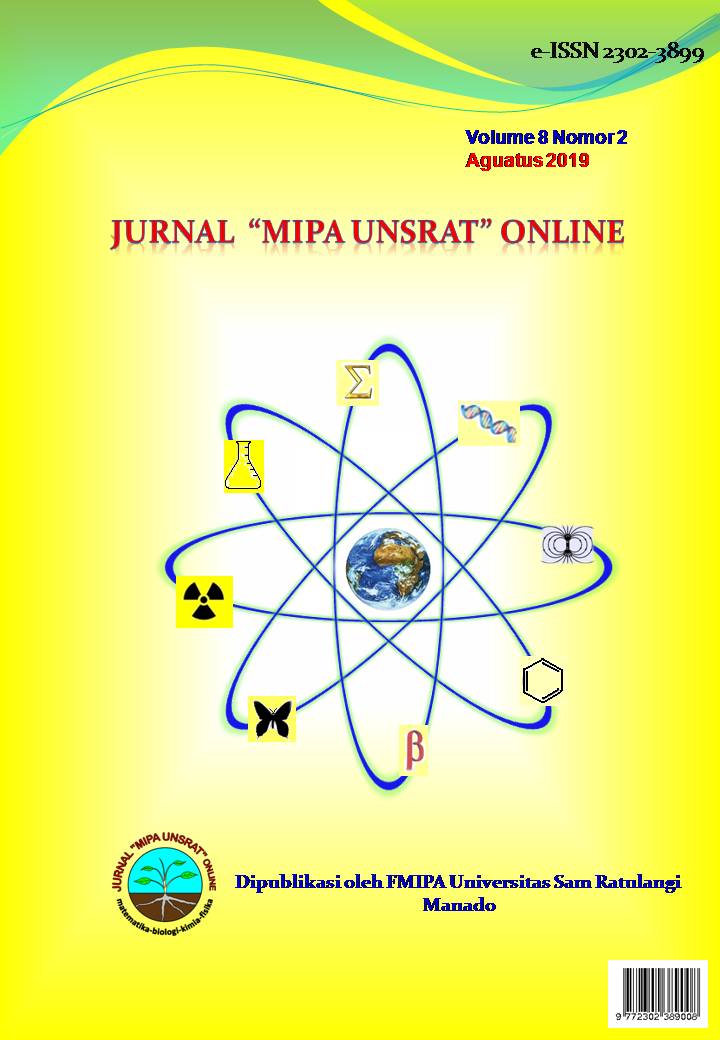Kajian Eksperimen Perbandingan Nilai Konduktivitas Bahan Kuningan, Baja Tahan Karat, dan Aluminium Menggunakan PASCO Heat Conduction Apparatus TD-8513
DOI:
https://doi.org/10.35799/jm.8.2.2019.23515Abstract
Konduktivitas panas adalah salah satu karakteristik suatu bahan yang menunjukkan nilai aliran panas yang mengalir dalam satu luasan. Dalam studi eksperimental ini, nilai konduktivitas diuji dan di bandingkan dengan menggunakan Peralatan Konduksi Panas PASCO TD-8573. Peralatan ini memiliki 4 bar metal : satu Almunium, satu Baja tahan karat, dan dua Kuningan dengan potongan lintas yang berbeda. Salah satu bagian ujung dari tiap bar di panaskan atau didinginkan dengan alat peltier. Tiap bar memiliki 10 kilo ohm termistor yang tertancap 3 cm satu sama lain. Tujuan dari studi ini adalah untuk mengukur konduktivitas panas dari Kuningan, Baja tahan karat, dan Almunium. Hasilnya, konduktivitas Almunium adalah yang terbesar diikuti oleh Kuningan, dan yang terakhir Baja tahan karat
Heat conductivity is one of the characteristics of a material which shows the amount of heat flowing across one unit of area. In this experimental study, the conductivity values are tested and compared using PASCO Heat Conduction Apparatus TD-8513. The apparatus has four metal bars: one aluminum, one stainless steel, and two brass with different cross-sections. One end of each bar is heated or cooled by a Peltier device. Each bar has two 10 kΩ thermistors embedded about 3 cm from each other. The purpose of this study was to measure the heat conductivity of Brass, Stainless steel, and Aluminum. The results, the conductivity of Aluminum was biggest were followed with Brass were and finally the Stainless steel





